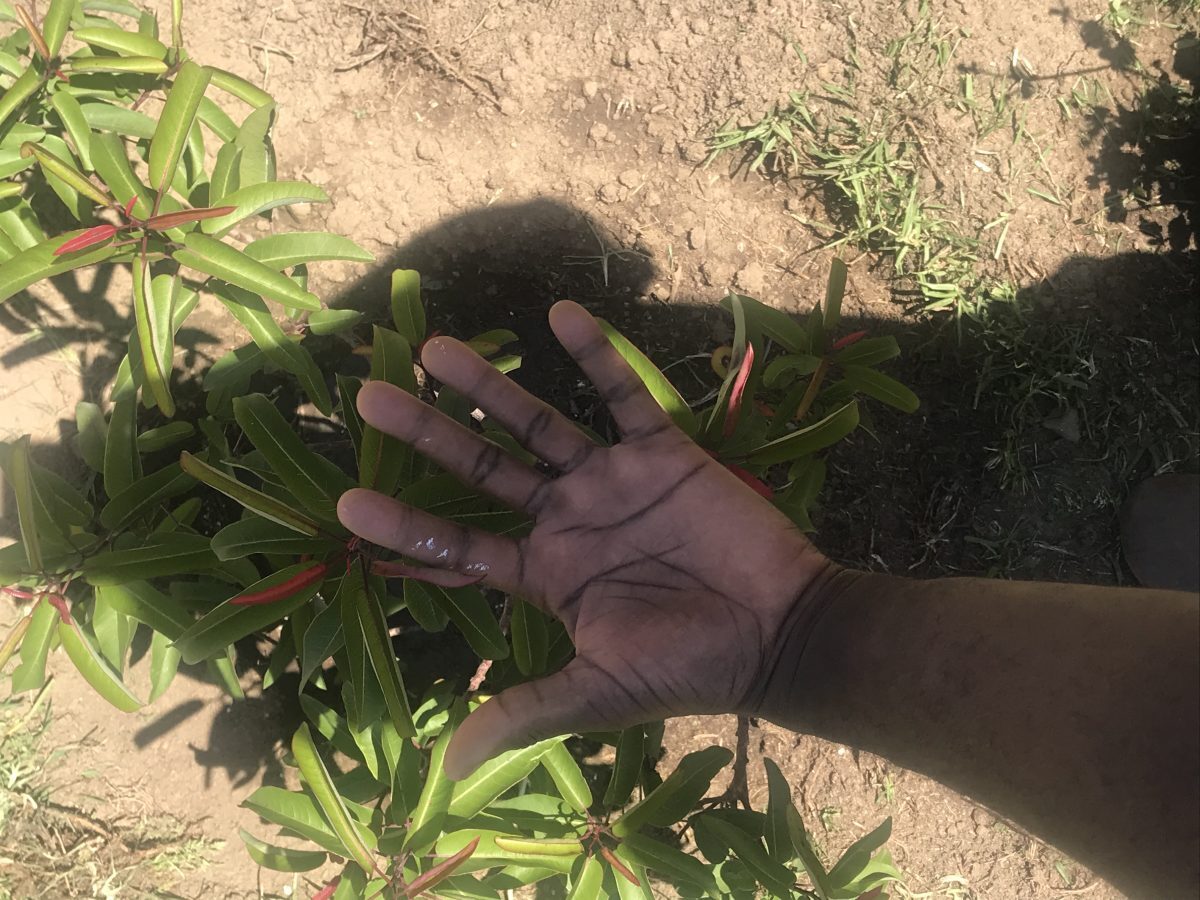Even though CAM has been closed since March, a conversation with Paul Mpagi Sepuya makes me think even more about exhibitions without an audience. Sepuya’s summer survey in St. Louis is now documented in a gorgeous monograph, a selection from thirteen years of the artist’s photographic explorations within its pages. For those of us who lived with the show, the catalog is a reunion with the subjects that inhabited the museum’s gallery spaces—faces, bodies, gestures, and settings we became familiar with over the summer.
A conversation about around pictures, Sepuya’s exhibition of new work that followed the CAM survey, was canceled the day it was to open at Vielmetter Los Angeles. “At least it got installed,” Sepuya tells me, “a couple of friends showed up. Then dinner got canceled too.” It’s been a while since the alarm of the pandemic closed down the show. Sepuya sounds as though he has mostly absorbed the shock of it. But after traveling with his work to different galleries and museums for some time, he laments: “This was the first time in three years that I’d been in the same city as one of my shows.”
I visit the gallery’s website and look at the installation images: large-scale works, each given lots of room. The privacy of the space stands out—this is the view the first one to turn on the lights in the morning sees. Every museum and gallery makes such images. You can see Sepuya’s CAM show here. But because most public spaces now look private, devoid of people, a melancholy tone haunts the setting. Large-scale works, but you can’t feel the presence and physicality of that scale.
Sepuya tells me the Vielmetter show is centered on the idea of screens. The starting point of this idea is not a new work, but one that he had shown previously at team gallery. “It’s a portrait of a friend taking a selfie in the studio. It’s kind of an off moment. I thought it was worth thinking about.” The friend is turned away from Sepuya’s camera so his face is not visible, but the face is revealed in the screen of the subject’s iPhone. A portrait of a self-portrait. The dark curtain in the background is a kind of screen as well. There is often a powerful intimacy contained in Sepuya’s work, and this remains a component in the new works; but there is also a sense of remove. A screen offers an image to view; a screen hides an image; a screen within a screen—does this offer more or less to see; are we drawn in or drawn away?
My mind doesn’t need to travel too far toward a social-distancing metaphor: the screen-like experience of life right now as we peer through windows, through the screens of the window, over the nose of the masks that screen our faces. I can only see Sepuya’s pictures on the screen of my machine. We are drawn together. We are drawn away.
Sepuya says at the start of our conversation, “in-person things have been moving to Zoom and I’ve seen lots of faces.” In most of the new work faces are obscured.
I choose not to do these interviews via Facetime or Zoom. I call on the phone and take notes, because the face of the subject juxtaposed to the image of my face feels like an interruption, a screen between the two of us. After a day of meetings, when I get up from the computer it is like I still carry the screen with me, like the visor of a helmet, until this feeling at last dissipates as the familiarity of my surroundings press upon me.
Sepuya’s photographs would not be able to come together without familiarity, the friends who are willing and at ease. They would not jar us without a sense of private moments exposed. No one is alone in these pictures: not the subject, the artist, or the viewer. Flesh smudges are left on a lens or a mirror, residue of the real amidst the artifice. A gallery of art that no one sees we trace upon our screens.
“I’m not doing any art-related things at all,” Sepuya says. “I have no interest in it. I’m taking my time. I’ve had no chance to be home for the last few years. I do a lot of yard work. I’m not in my studio…. Occasionally I’m thinking about pointing a camera, taking pictures at home. I’m in no rush. I’m taking a break. Another museum show was postponed, and whether or not it happens, I’m not worrying about it.”
I ask him to send me a picture that reflects the situation he is in. In a few minutes over my email I receive three snapshots: the artist’s hand, palm down upon a plant in his garden; the artist’s hand, palm up in his own shadow; the artist’s hand touching the plant in sunlight.
—Eddie Silva
